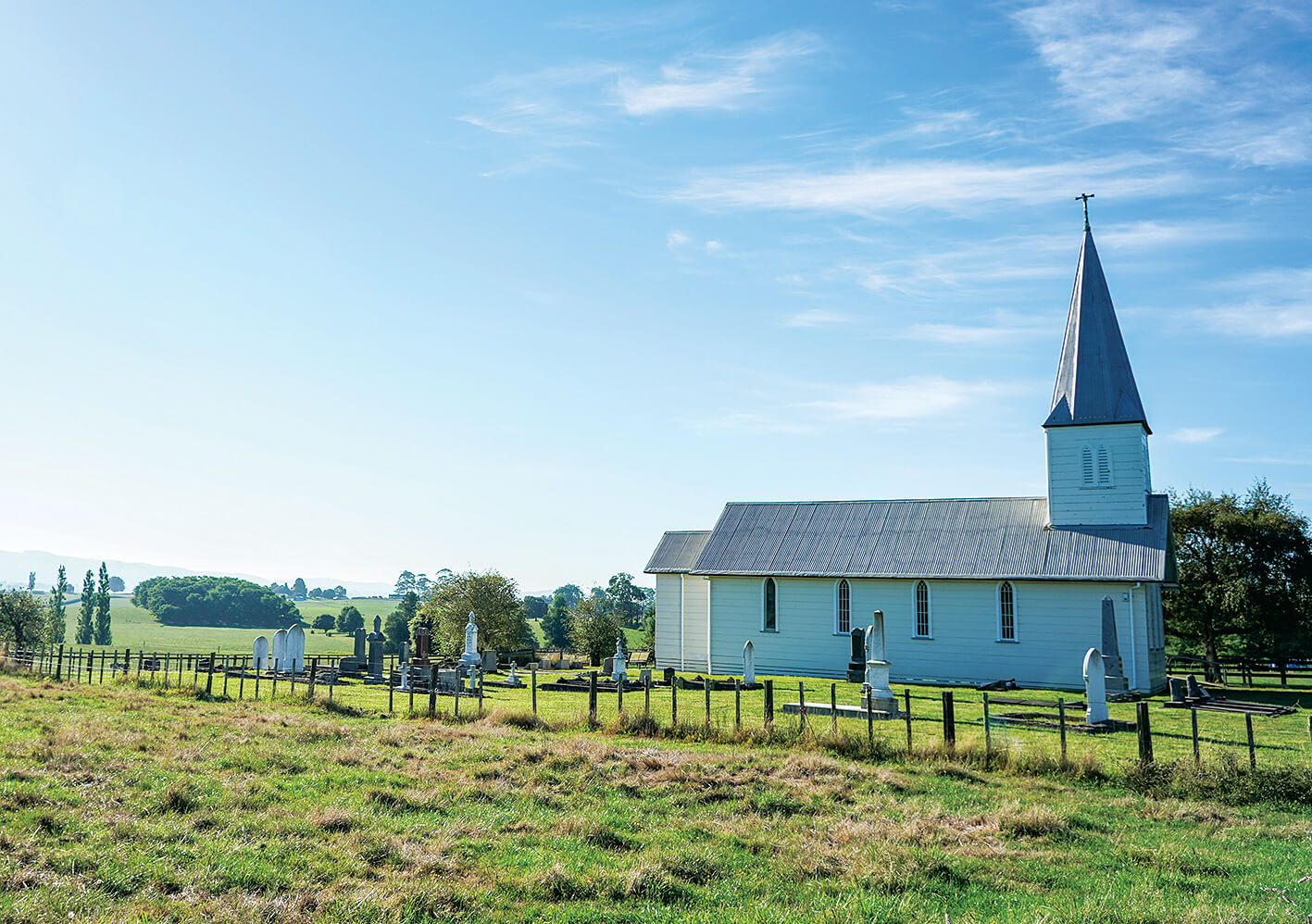
The window at St Paul’s Church will be removed and replaced with a replica to prevent the original from deteriorating further before it is refurbished.
St John’s Anglican Parish in Te Awamutu has confirmed an “awfully difficult” decision.

Jennifer Burton captures the historic church at Rangiaowhia.
The News revealed last month that historic stained-glass windows at both of Waikato’s only category one historic buildings – part of the Te Awamutu parish – need an urgent refurbishment estimated to cost nearly $150,000.
Work is required on windows at both Old St John’s Church in Te Awamutu and St Paul’s Church at Rangiaowhia.
Now, the window at St Paul’s at Rangiaowhia – described as “critical” by an expert about a year ago when quotes for the work were last sought – will be removed and replaced with a plastic replica. That will prevent further deterioration until a plan is finalised to fund the refurbishment of the original window.
Estimates figures presented about 12 months ago suggested refurbishing the St Paul’s window would cost $60,000 the Old St John’s window $40,000.
But funding remains an obstacle because while there are organisations which fund work on historic buildings, many won’t fund active churches – which both Old St John’s Church and St Paul’s Church are.
Category one historic places are places of special, or outstanding, historical or cultural significance.
Waikato’s only other category one structure is Cambridge’s Victoria Bridge.

Julie Guest
Parish priest Reverend Julie Guest confirmed last week that while the timing isn’t yet known, the removal of the St Paul’s window would cost about $10,000.
The parish can fund the removal process, she said, but the remaining $50,000 needs to be raised, as does the money to refurbish the Old St John’s window.
The St Paul’s window was being prioritised because it’s the more urgent of the two churches, Reverend Guest said.
A specialist Christchurch company will remove the window, and store it free of charge for the parish while next steps are decided.
The parish has established a fundraising committee which has been working to find ways to fund the refurbishment – including a gala set for November.
“But honestly,” Reverend Guest said last week, “it’s just an awful position to be in.
“On the one hand, we’re conscious of honouring the history of the St Paul’s building, so of course, you don’t want to remove the window.
“But on the other hand, we have a desire not to potentially end up being even less honouring in the long run. The longer the window stays in there, the more it deteriorates.
“So, we’re obviously concerned both the windows will get to the point where they’re beyond maintenance. We can’t let something so precious just decay.”
Reverend Guest said consultation with both the diocesan bishop of the Diocese of Waikato and Taranaki – the diocese the parish is part of – Bishop Philip Richardson, and St Paul’s leadership has been undertaken regarding removing the St Paul’s window to ensure an inclusive and respectful process.
“Truthfully, whenever the Christchurch staff would have taken the windows out to do the refurbishment, they were going to have to install replicas in their place anyway while they restored them, because the process will take weeks.”
“But while the intention is of course for them to go back, a worry I have is how long that will take, depending on how and when we can raise the refurbishment money. That’s the scary thing.”

At the time of the controversial raid at Rangiaowhia 150 years ago, this illustration was presented under the headline “The defenders of New Zealand”.
The “prayerful dream”, Reverend Guest said, is that the process is streamlined.
Ideally, she said, once the St Paul’s window is removed, and replaced with the replica, the parish would somehow find the money “within a year” to refurbish the original.
Then, when the Christchurch staff return to re-install the refurbished St Paul’s window, Reverend Guest hopes additional funds would then allow the staff return to the South Island with the Old St John’s window to complete that refurbishment.
“While it’s an incredibly difficult position to be in at the moment, there’s no denying how wonderful it will be when the work is done,” Reverend Guest said.
St Paul’s on Rangiaowhia Road opened in 1856.
Worship at St Paul’s came to an abrupt end when the Rangiaowhia attack drove the surviving Ngāti Apakura and Ngāti Hinetu people away from their settlement.
The church lay empty for about 10 years, until repair work began in the 1870s.

St Paul’s Church at Rangiaowhia. Photo: Benjamin Wilson.








